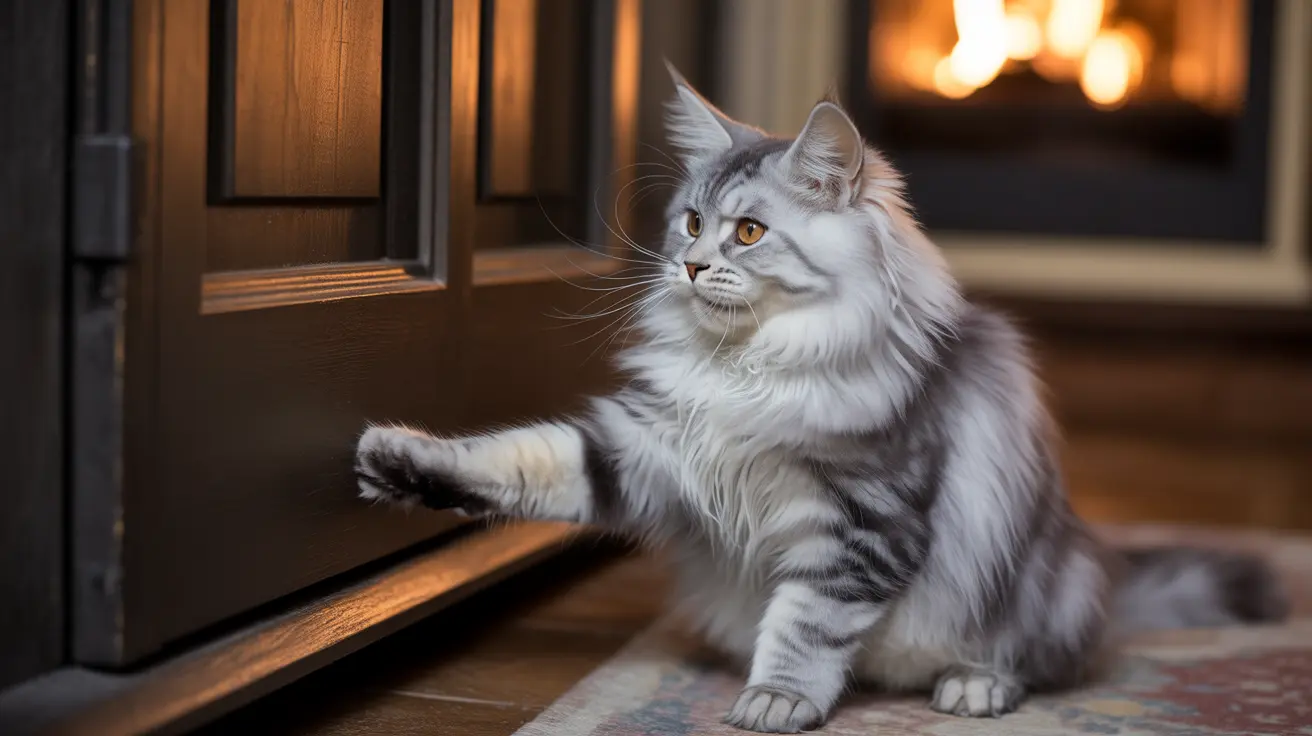If you're a cat owner, you've likely experienced the sight of a tiny paw reaching under your door, accompanied by persistent meowing. This common feline behavior of pawing under doors can be both endearing and puzzling. Let's explore the fascinating reasons behind why cats engage in this characteristic behavior and what it means for their emotional and physical well-being.
Understanding why cats paw under doors requires insight into feline psychology, instincts, and social needs. This behavior isn't just a quirky habit - it's deeply rooted in their natural instincts and can tell us important things about their emotional state and needs.
The Natural Instincts Behind Door Pawing
Cats are naturally curious creatures with strong hunting instincts. The gap under a door presents an intriguing space that triggers their predatory nature. In the wild, small spaces like these might hide potential prey, making the area under doors particularly attractive to their hunting instincts.
Their sensitive paw pads also serve as important sensory tools, allowing them to gather information about their environment. When they paw under doors, they're essentially conducting reconnaissance of the space beyond.
Social and Emotional Motivations
Seeking Attention and Connection
One of the primary reasons cats paw under doors is to seek attention and maintain social connections. When separated from their human family members, cats may feel anxious or lonely, leading them to reach out - literally - under the door.
This behavior often intensifies when cats know their favorite person is on the other side, especially in rooms frequently used like bathrooms or bedrooms. The physical barrier of the door contradicts their desire for social interaction.
Territory and Control
Cats are territorial animals who prefer having access to their entire domain. A closed door represents a boundary that limits their control over their environment, often triggering their instinct to investigate and attempt to gain access.
Environmental Factors and Learned Behaviors
Environmental changes, such as new household members or schedule disruptions, can increase door-pawing behavior. Cats may also learn that pawing at doors results in them being opened, reinforcing the behavior through successful outcomes.
Boredom and Stimulation
Insufficient mental and physical stimulation can lead to increased door-pawing behavior. Cats need regular play and enrichment activities to stay mentally healthy and prevent destructive or attention-seeking behaviors.
Solutions and Management Strategies
Managing door-pawing behavior requires a multi-faceted approach:
- Provide plenty of environmental enrichment through toys and climbing spaces
- Maintain consistent daily play sessions
- Consider leaving non-essential doors open when possible
- Use positive reinforcement to reward alternative behaviors
- Install cat doors where appropriate and safe
Frequently Asked Questions
Why does my cat paw under the door and meow while doing it?
Cats often combine pawing and meowing to maximize their communication efforts. This dual-action behavior typically indicates a strong desire for attention or access, with the meowing serving as a vocal emphasis to their physical attempts to reach you.
How can I stop my cat from pawing under closed doors without causing stress?
The best approach is to provide alternative activities and enrichment while maintaining consistent boundaries. Increase playtime, offer interactive toys, and avoid reinforcing the behavior by responding only when your cat is calm.
Does pawing under doors indicate my cat has separation anxiety?
While pawing under doors can be a sign of separation anxiety, especially if accompanied by other stress behaviors, it's not always indicative of anxiety. However, if your cat shows additional signs of distress when separated, consulting with a veterinarian is recommended.
Why do cats treat the gap under doors like a hunting or play area?
The gap under a door mimics natural hunting opportunities cats would encounter in the wild. The restricted visibility and movement potential triggers their predatory instincts, making it an naturally engaging space for play and exploration.
Can cats learn to open doors by pawing at them, and how does this happen?
Yes, some cats can learn to open doors through observation and trial-and-error. They may learn to jump and pull down handles or use their paws to manipulate lever-style handles, especially if they've observed humans opening doors repeatedly.
Understanding your cat's door-pawing behavior helps strengthen your bond and ensure their needs are met. While this behavior can sometimes be frustrating, remember it's often just your cat's way of maintaining connection and expressing their natural instincts.






